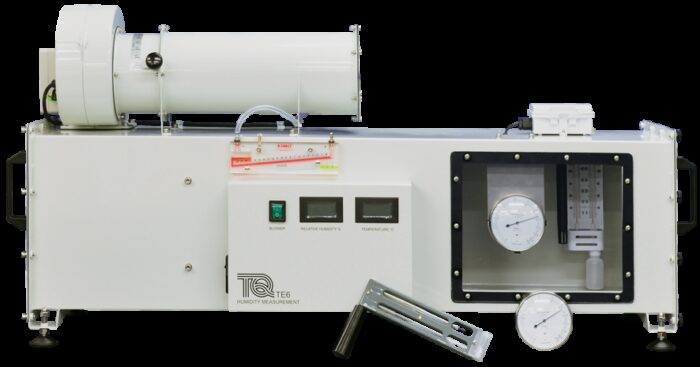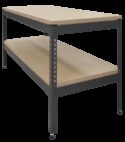Experiment
TE6
HUMIDITY MEASUREMENT
A self-contained unit to demonstrate the principles of humidity measurement and to compare the relative performance and accuracies of different types of humidity measurement systems.
If you have any questions or you'd like to discuss a product, please call us.
+44 1159 722 611HUMIDITY MEASUREMENT
The Humidity Measurement unit allows students to compare different methods of humidity measurement. It demonstrates the differences in accuracy between instruments and their ease of use. It also includes a blower unit with a valve to show how air flow affects the different instruments.
A square cross-section duct supports a blower unit. The duct contains a selection of instruments to measure humidity and temperature. A clear window in the duct allows students to see the instruments. A removable outlet grill gives access to the instruments. A fan in the blower unit above the duct supplies a flow of air and a hand-operated valve varies the air flow rate. This allows students to study the effect of air flow on the instruments. An orifice plate and manometer measure the flow rate. An air filter in the air flow path stops dirt or other particles affecting the instruments.
The instruments include a whirling hygrometer that students use near the outlet of the duct, providing an extra method of measuring temperature and humidity.
The back of the duct includes an extra port. It allows students to introduce low-pressure steam into the duct, to increase the range of experiments (steam generator not included).
Learning outcomes
- Measurement of air flow rate in a duct
- Measurement of relative humidity using different types of instrumentation
- Comparison of measurement methods for accuracy and ease of use



